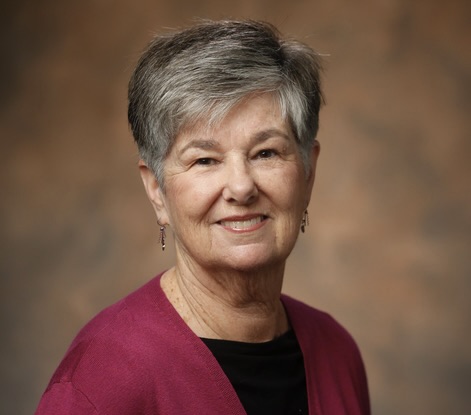I’ve Always Wondered…
About how we are really formed in the life of the Christian faith
About how faith is nurtured and supported
About who among us has gifts for spiritually being with children and youth
I’ve been thinking and writing about this for a long time beginning with my book, Making a Home for Faith, Nurturing the Spiritual Life of Your Children (Pilgrim Press, 2007). It was there that I first made the suggestion that parents are really the faith educators for their children because they are with them on a daily basis to thank God for a flower or a beautiful sunset. They are there when children grieve the loss of a friend or a pet or a family member. They are there when children are anxious about yet another act of gun violence. Parents and family are there to model what a faithful life looks like. They are present with a child to make connections between faith and life. And their spirituality matters!

Thank you to Karl Fredrickson and unsplash.com for this image
I’ve been thinking about this a lot since 2020 when our churches had to quickly figure out how to make faith formation resources available for use at home, not in church school classes on Sunday or during the weekday. Then we discovered that many parents were exhausted from supporting their child’s weekday education as it was switched from in-person to virtual. There seemed to be little energy left to “teach” using the wonderful resources our churches made available.
In an article he wrote, “Unfettered Wonder: Rediscovering Prayer Through the Inspired Voices of Children” T. Wyatt Watkins suggests that when we focus solely on teaching children Bible stories, then “Faith content quickly pushes spiritual awareness to the sidelines. Soon children parrot, and eventually think, only within their inherited framework of belief…As young people grow to rationally question, or even to reject, the validity of these formulations of truth, they are often left with no alternative for apprehending the spiritual realm of existence. Their spiritual repertoire remains flat and narrow.” (In Children’s Spirituality, Christian Perspectives and Best Practices, Holly Catterton Allen, Cascade Books, 2008, 133).
So I wonder. I wonder about how we can change the narrative. How can we offer a less flat and narrow spiritual perspective? How do we help parents become comfortable with their own faith so that the faith they are nurturing in their child is roomy and spacious? I wonder how we help parents and extended family members figure out how they can live their faith with a child.
In my recent book, I Wonder, Engaging a Child’s Curiosity about the Bible (Abingdon Press, 2016, 131-134) I offer a simple model for parents to use since some don’t know where or how to begin. A regular habit of engaging in a spiritual practice seems to be a new idea for some. Offering simple steps of engaging with a child would be a way that both child and parent could be nurtured in faith. This model could be used over a meal together, once a week or as a way to shut down the day.
A Wondering Model of Questions
Enter – Just begin a time of conversation with a child – how was your day today? The ancient spiritual practice of the Examen asks us to think back on the day – Where did you see God’s love today? Where did you give or receive God’s love today? Or some families like to share thorns (difficult things that happened), roses (good things that happened) or buds (things they are looking forward to.
Hear – Read a Bible story. You’ll find a list of suggested resources at the end of the article.
Pause – Just sit for a minute in silence, or maybe just a few seconds.
Wonder – Talk about the story together questions like: Who is in the story and what happens to them? What do you think the story is about? How is this story different from how we are living today? Why do you think this story is important? When would be a good time to remember this story? (With thanks to Rabbi Sandy Eisenberg Sasso for these questions)
Bless – Close with a simple prayer.
If you are thinking about this fall and how you can support the spiritual formation of children and families, you might offer several one hour conversations with parents and try this “Wondering Model” with them. Let them experience it. Then maybe, just maybe they might try it at home. For the second week of this “class” let them share stories of trying it. Blessings on your ministry with all God’s children!
Resources for stories:
Young children (3-5 years) – Celebrate Wonder Bible Storybook, Brittany Sky, (Abingdon Press, 2020).
Young children (5-8 years) – Growing in God’s Love, A Story Bible, Carol Wehrheim and Elizabeth Caldwell, eds, (Flyaway Books, 2018).
Elementary Age Children (8-11) – The Deep Blue Kids Bible (Common English Bible, 2020).
Middle School and Youth – A different kind of storybook tells about people from many different faith traditions and how faith made a difference in their life. It would be a great read with this age group as well as older elementary. Holy Troublemakers and Unconventional Saints by Daneen Akers (Watchfire Media 2019, has stories and illustrations about people who worked for love and justice in the world. Also excellent for adolescents is CEB Student Bible. It has great notes and spiritual practice suggestions written by youth and young adults.


Thanks Lib -a thoughtful reflection on ways to nurture children (and adults) in faith formation. The need to continue to get resources in the hands of parents continues to be so very important. As always, I so value your wisdom!
This article will assist me as I preach in August using the lectionary text Hebrews 11-12:2. “By faith…” what does that mean?